About a year ago we got a Spiny leaf insect, they are one of the most popular stick insects that people keep as pets. The females in particular are popular due to their large size and interesting look. Somewhat resembling a dried leaf they also have spikes or spines on different parts of their body.
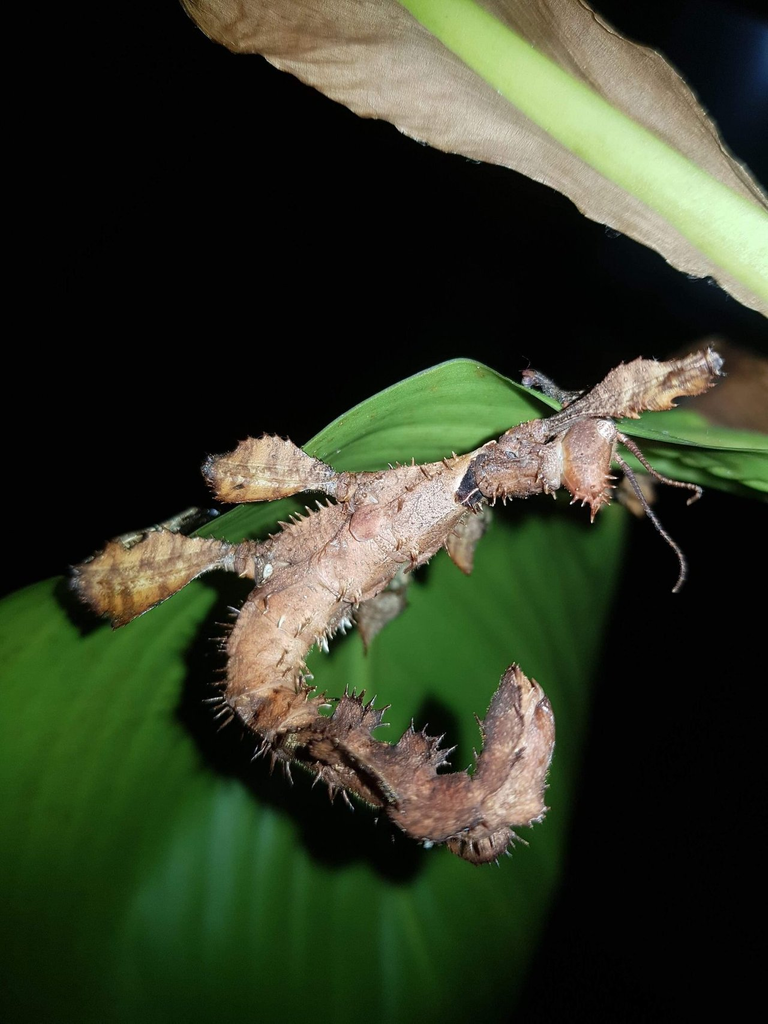
These spines are mostly used to look scary if need be but they can cause harm to potential predators, the spines on the bottom and tail of one of these girls is capable of drawing blood from a human finger. They will pinch the two parts together squashing the unfortunate bug or digit in between the sharp spines. Generally though they are very relaxed little bugs and will happily crawl up and down your arm or sit on your hand/finger. You can reach in and pick them up without much worry as they are relatively slow moving as adults but need to be wary of their sticky little hands and how delicate they are.

When in the wild or in their tanks they often sway side to side, breeze or not. Again this is to replicate a leaf and avoid predators. It is far easier to stay hidden than to fight or run, especially since the females of this species have no wings and are very slow.
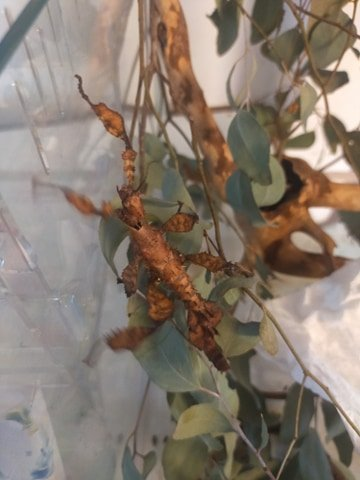
Unfortunately recently our adult female died. We think it may of been due to heat when we had some very warm days over summer but can never really know. We have no idea how old she was when we got her or even how long they generally live for. It's hard to get proper answers as people have very different experiences with them.
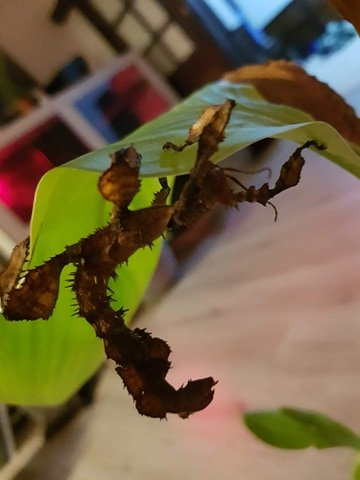
Luckily before she passed she gifted us some eggs! When the female lays her eggs they will shoot out of her and can launch as far as 2 feet. This is an effort to spread them around and give a higher chance of survival to the babies, if you consider that they often live in trees the 2 foot range could be greatly extended by wind and other factors.
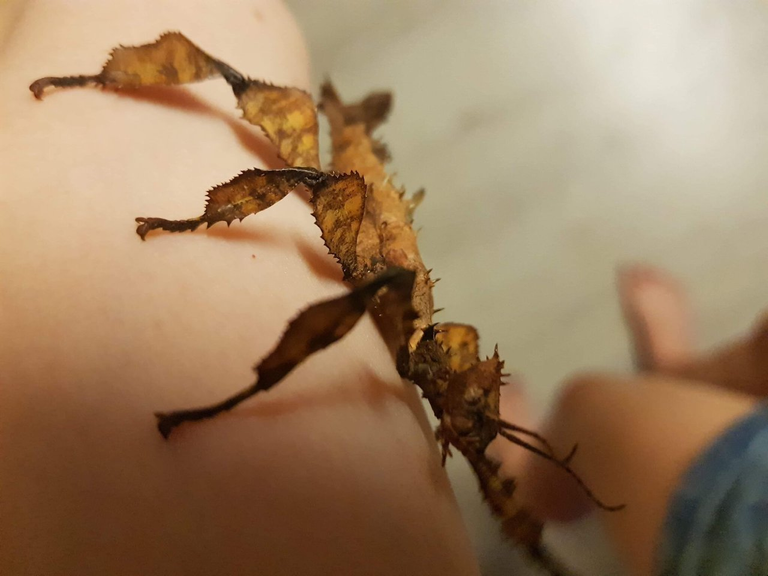
The eggs resemble some sort of seed and can be easily missed if you have a natural substrate, we collected all the eggs from her tank and set about incubating them.
Fun fact, Female spiny leaf insects can reproduce without a male, however all of her babies will be females and exact copies of her. Commonly referred to as clones.
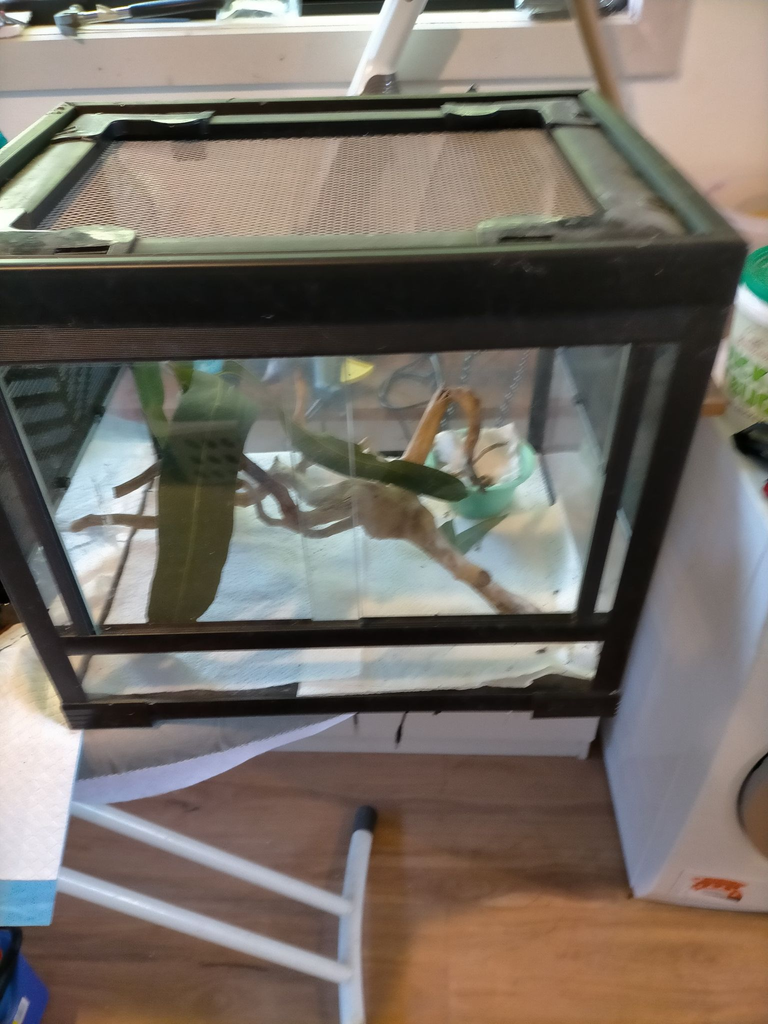
The eggs and babies will be put in here so when they hatch they are contained
To incubate they like warm moist conditions so we put them on some damp paper towel inside a small clear plastic case. As they begin to hatch we moved them to another damp bit of towel in a glass tank. When they first hatch they are absolutely tiny so whatever you keep them in needs to be very secure or they will all escape. It can't be fully sealed as they require fresh air and ventilation so a thin mesh is ideal.

Eggs on moist paper towel, in fairly warm conditions to help hatch
I checked again this morning and so far 2 have hatched, they both just look like a miniscule version of their mum. It's not super easy to get a photo of them as they are fast as babies and jump around. I tried to get one to sit on my finger but he just bounced around trying to get away. Slowly as they get bigger and fatter they lose the speed and agility afforded to them as babies.
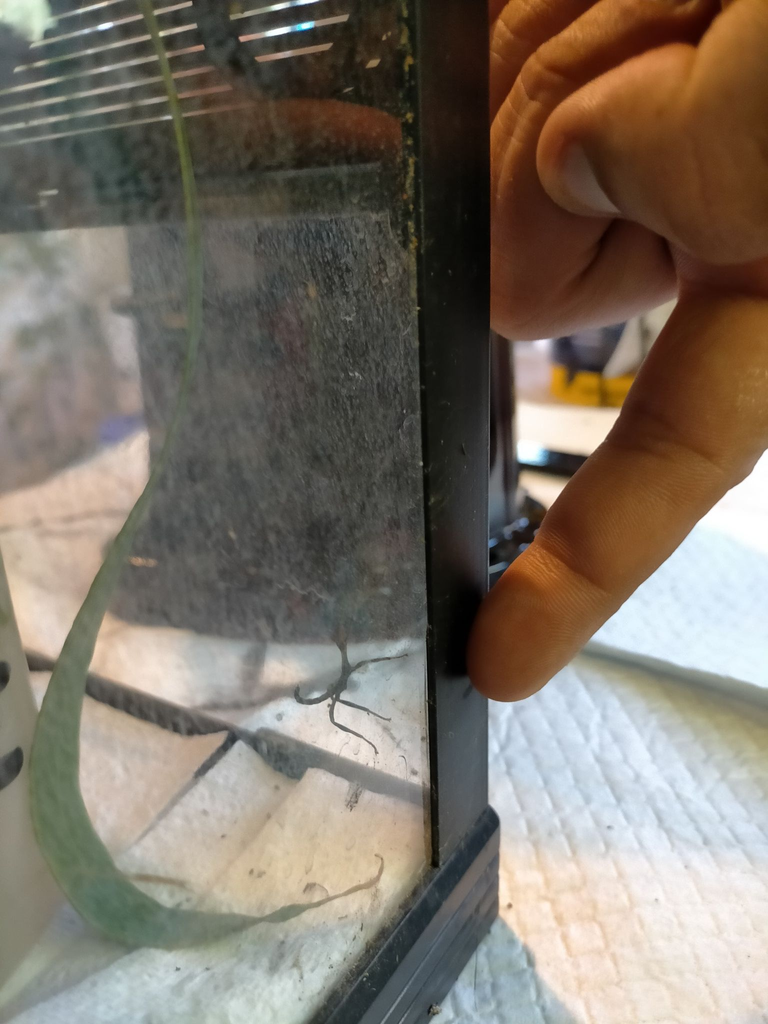
Compared to the tip of my finger. 2 days old
The male of the species looks rather different and resembles a stick like most other stick insects. He also has the ability to fly. If a female is not introduced to a male she will still produce and lay her eggs but they will all be genetic copies of her and possess the same attributes she did.
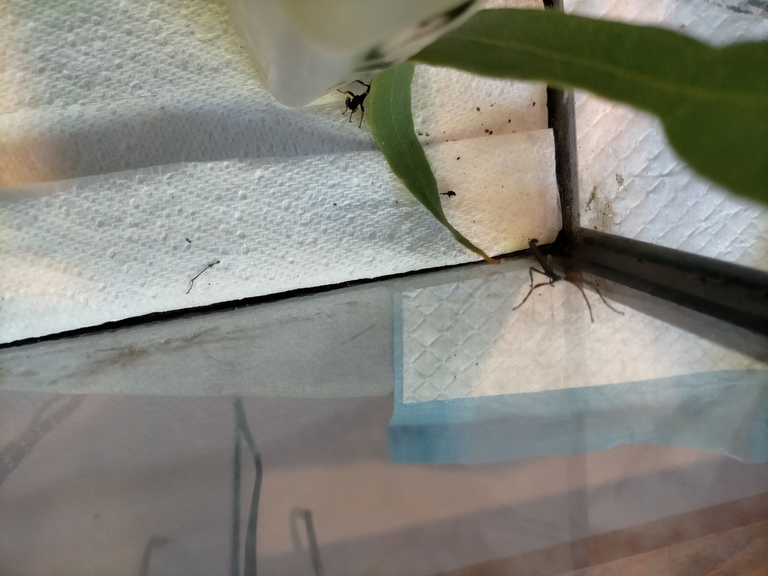
Second baby hiding under the leaf
These insects are abundant and not considered under threat at any time soon. We often give eggs or even adults to places like Kindergartens where the children can take part in their care and learn about the life stages. It is a great way to teach kids as it happens relatively fast and they are generally very interested in them.
They are fairly low maintenance to care for and eat only gum leaves, fresh leaves should be given around twice a week and for water you can either use a very shallow dish, cottonbuds or similiar soaked in water in a small dish, or mist them a few times a week.
I hope these little ones grow up to help some kids understand the life cycle and also help them learn about caring for a pet. I'm sure they will have clones of their own some day!
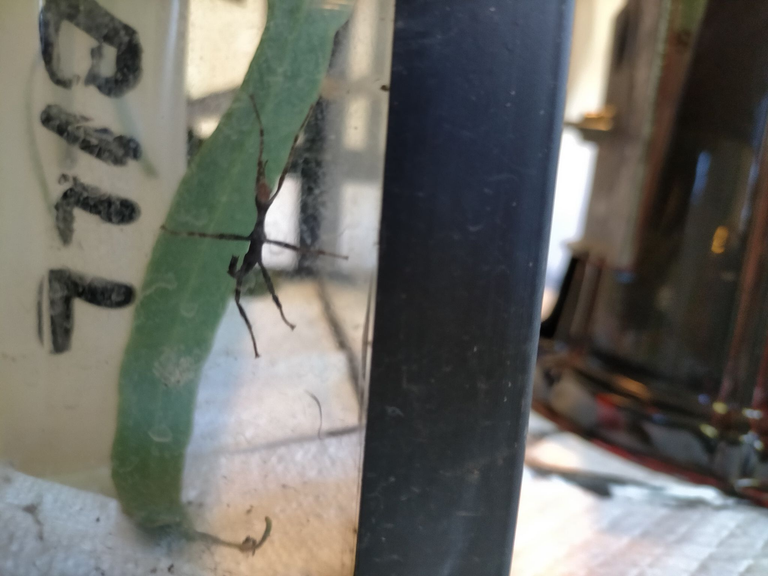
Originally we thought because she had been housed with males previously that her eggs would be fertilised but so far it is looking like they are probably clones, only time will tell.
